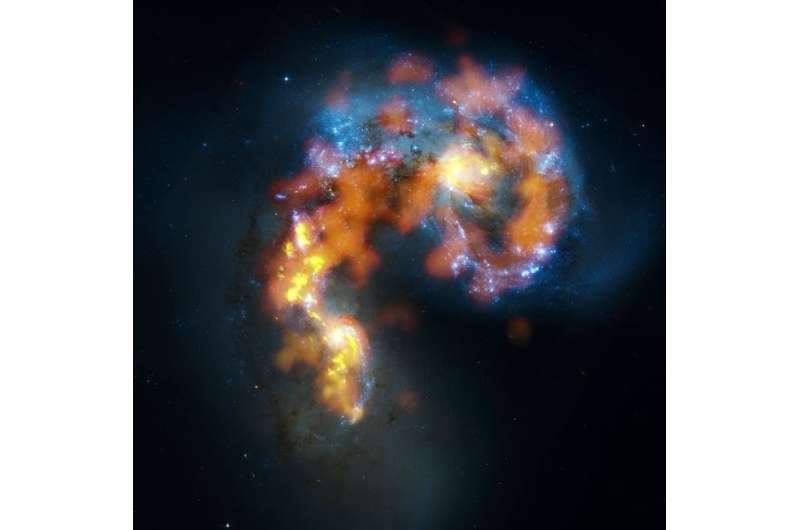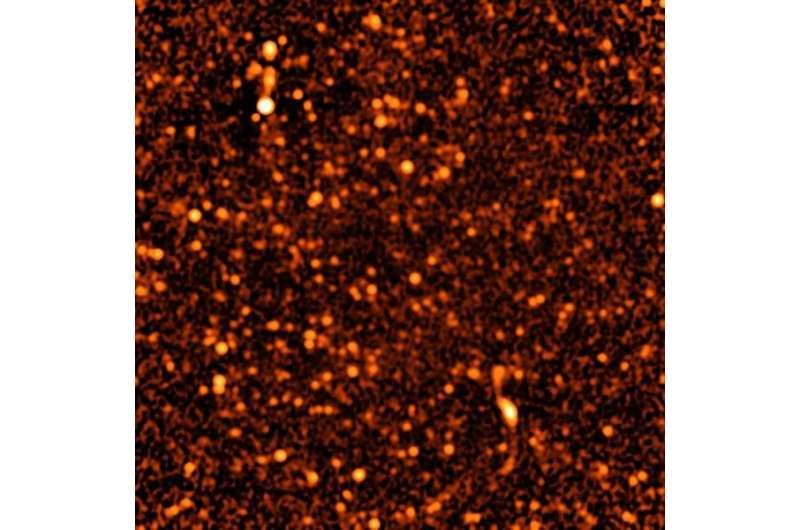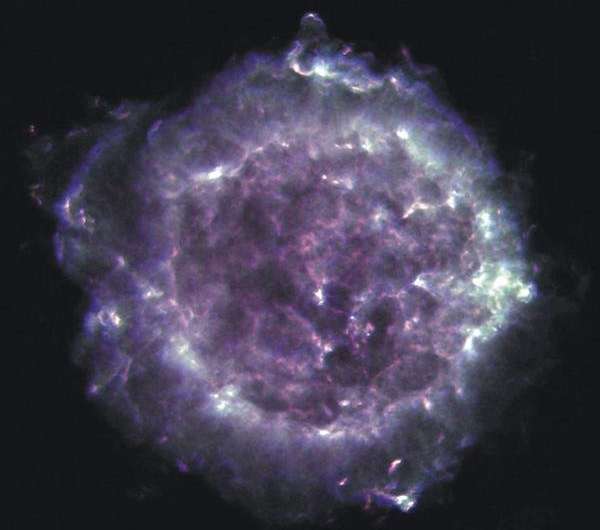A massive telescope for seeing the invisible

Some of the universe's greatest mysteries could soon be resolved thanks to the Square Kilometre Array (SKA), a huge radio telescope that will be built in South Africa and Australia. Several EPFL labs are involved in this epic project.
With the Square Kilometre Array (SKA) telescope, scientists hope to be able to view matter and forces that have been invisible until now. The SKA is an immense radio telescope that will span two sites: one in the Karoo desert in South Africa, and the other in the Murchison region of western Australia. Scientists from sixteen countries so far and around 100 research institutions, including EPFL, have teamed up for the project.
"This will spawn a new era for our field," says Jean-Paul Kneib, head of EPFL's Laboratory of Astrophysics (LASTRO). The SKA will give scientists unprecedented capabilities for studying the universe. While most telescopes, like the famous Hubble Space Telescope and the Very Large Telescope in Chile, use optical refraction and reflection, the SKA will capture radio waves. It won't be the first radio telescope – there's the one at Arecibo in Puerto Rico, for example – but it will be the biggest by far. It will have 3,000 dishes and one million antennas, enabling it to provide images of unparalleled precision.
Radio astronomy is a subfield of astronomy that aims to detect and study celestial objects invisible to optical instruments – i.e., objects that are extremely cold or very far away and don't emit much visible light. These objects make up most of the matter that's out in space: gases, regions blocked by cosmic dust and objects billions of light-years away. One of the most important discoveries made to date using radio astronomy is the existence of the cosmic microwave background.
"We hope the SKA will take us all the way back to the time when galaxies didn't yet exist," says Frédéric Courbin, a scientist at LASTRO. In fact, the project aims to solve one of the greatest mysteries in astrophysics: why is the universe's expansion accelerating? The SKA's exceptional performance should pave the way for scientists to answer that question by letting them observe how the first galaxies were formed and how hydrogen is distributed. Hydrogen – one of the most abundant elements in the cosmos – cannot be seen with conventional optical telescopes but "shines bright" with radio waves.
A lot of space required
Radio astronomy is a highly promising field, but it comes with its fair share of hurdles. For instance, its instruments take up a huge amount of space. Radio signals are plentiful but often very weak; radio telescopes must have an extremely large collecting area to produce images with good resolution. The larger the collecting area, the higher the system's sensitivity and the better the image resolution.

There are two options for obtaining a big enough surface: building massive dishes – the largest one is in China and boasts a diameter of 500 m – or using several antennas placed far apart. This second option employs interferometry, which is a method that, to put it simply, combines the signals received at each antenna. That delivers images with the same resolution as could be obtained from a single dish with a diameter equal to the largest distance between any two of the antennas. This is the technology used in the SKA, whose antennas will be located on two continents and some 3,000 km apart, resulting in a collecting surface of one square kilometer!
With that kind of a surface area, scientists can collect an impressive amount of data. A radio would have to operate for two million years to broadcast the same amount of data that the SKA can gather in a single day. But processing such vast amounts of information throws up another big challenge for the project team. "Not only do we have to come up with the right programs for reading and sorting the enormous volume of data, but we also have to develop specific algorithms for astrophysics applications," says Courbin.

Stepping in with Swiss skills
"At EPFL we have extensive experience in this field and can really bring something to the table," adds Kneib. That's why EPFL's Signal Processing Laboratory (LTS5) decided to join the project and help set up a Biomedical and Astronomical Signal Processing (BASP) research group at Heriot-Watt University in Edinburgh.
"The SKA's huge collecting area will let it capture extremely small, weak signals," says Yves Wiaux, who leads the BASP group. "But the data we collect from its various antennas will be highly fragmented. So we need to develop a system that can not only process those signals rapidly, but also piece them together." The group has come up with an approach based on two methods: compressed sensing, which is used to construct signals and images from incomplete data, and optimization, which enables algorithms to run in parallel – i.e., perform calculations on several servers at the same time.
"Sixteen countries are already involved in the project and it's becoming a major international endeavor. So now it's time for Switzerland and its scientists to join in, contributing our substantial skills and knowledge – like we did when we became part of the European Southern Observatory (ESO) and the European Space Agency (ESA)," says Kneib.
Provided by Ecole Polytechnique Federale de Lausanne


















